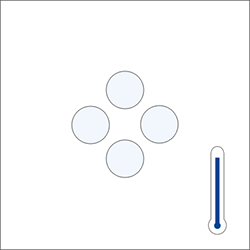Specific gravity, also known as relative density, measures the density of a substance compared to the density of water.
Specific gravity is related to density, as both are physical properties used to determine how "dense" a particular material is. This material can be a gas, liquid, or solid.
Specific gravity and density are used to identify a material, determine the concentration of a liquid solution e.g., alcohol or sugar in a drink), or test whether a product is within specifications.
This page will cover the basics of specific gravity and density.













